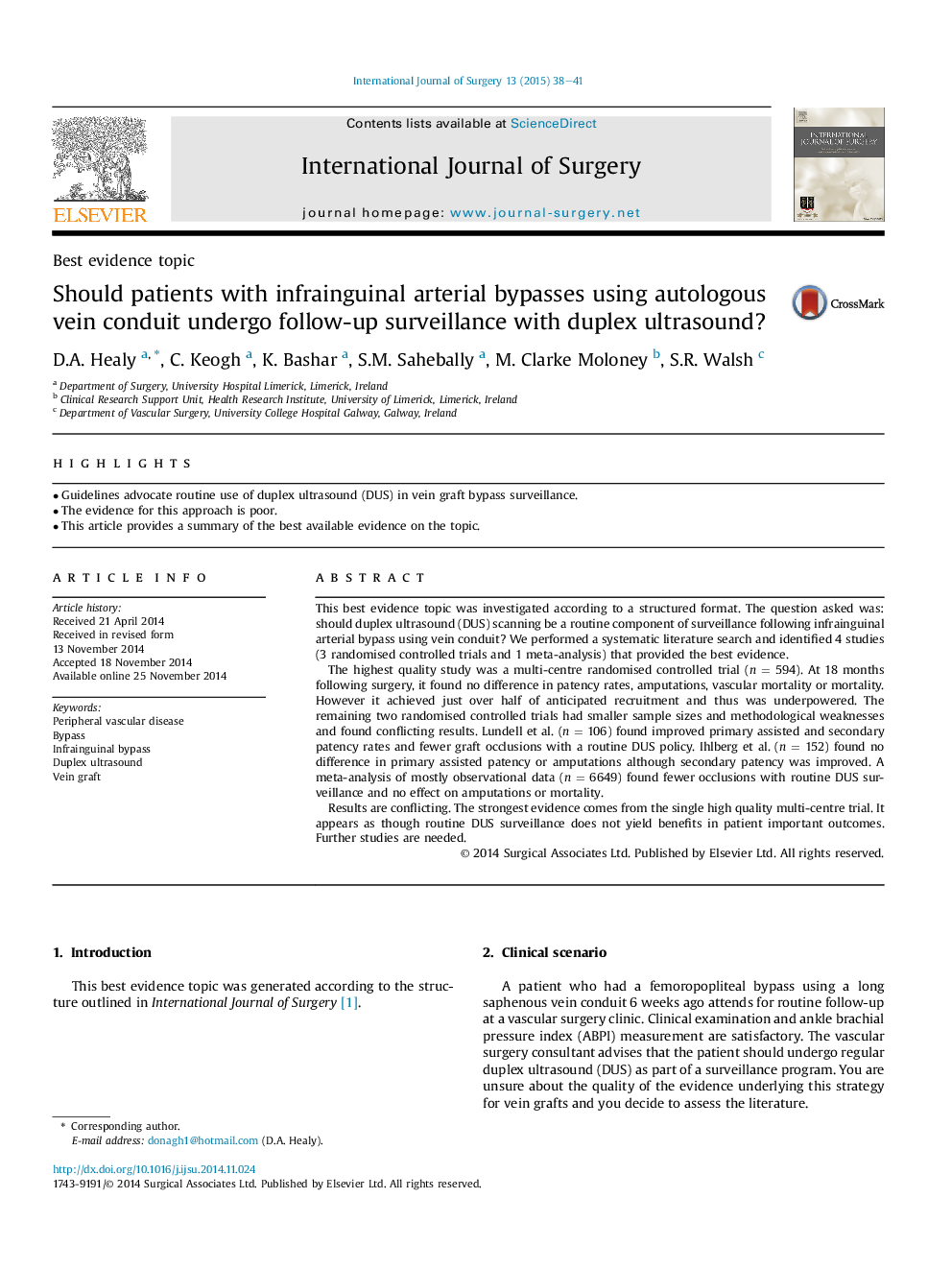| Article ID | Journal | Published Year | Pages | File Type |
|---|---|---|---|---|
| 6251527 | International Journal of Surgery | 2015 | 4 Pages |
â¢Guidelines advocate routine use of duplex ultrasound (DUS) in vein graft bypass surveillance.â¢The evidence for this approach is poor.â¢This article provides a summary of the best available evidence on the topic.
This best evidence topic was investigated according to a structured format. The question asked was: should duplex ultrasound (DUS) scanning be a routine component of surveillance following infrainguinal arterial bypass using vein conduit? We performed a systematic literature search and identified 4 studies (3 randomised controlled trials and 1 meta-analysis) that provided the best evidence.The highest quality study was a multi-centre randomised controlled trial (n = 594). At 18 months following surgery, it found no difference in patency rates, amputations, vascular mortality or mortality. However it achieved just over half of anticipated recruitment and thus was underpowered. The remaining two randomised controlled trials had smaller sample sizes and methodological weaknesses and found conflicting results. Lundell et al. (n = 106) found improved primary assisted and secondary patency rates and fewer graft occlusions with a routine DUS policy. Ihlberg et al. (n = 152) found no difference in primary assisted patency or amputations although secondary patency was improved. A meta-analysis of mostly observational data (n = 6649) found fewer occlusions with routine DUS surveillance and no effect on amputations or mortality.Results are conflicting. The strongest evidence comes from the single high quality multi-centre trial. It appears as though routine DUS surveillance does not yield benefits in patient important outcomes. Further studies are needed.
